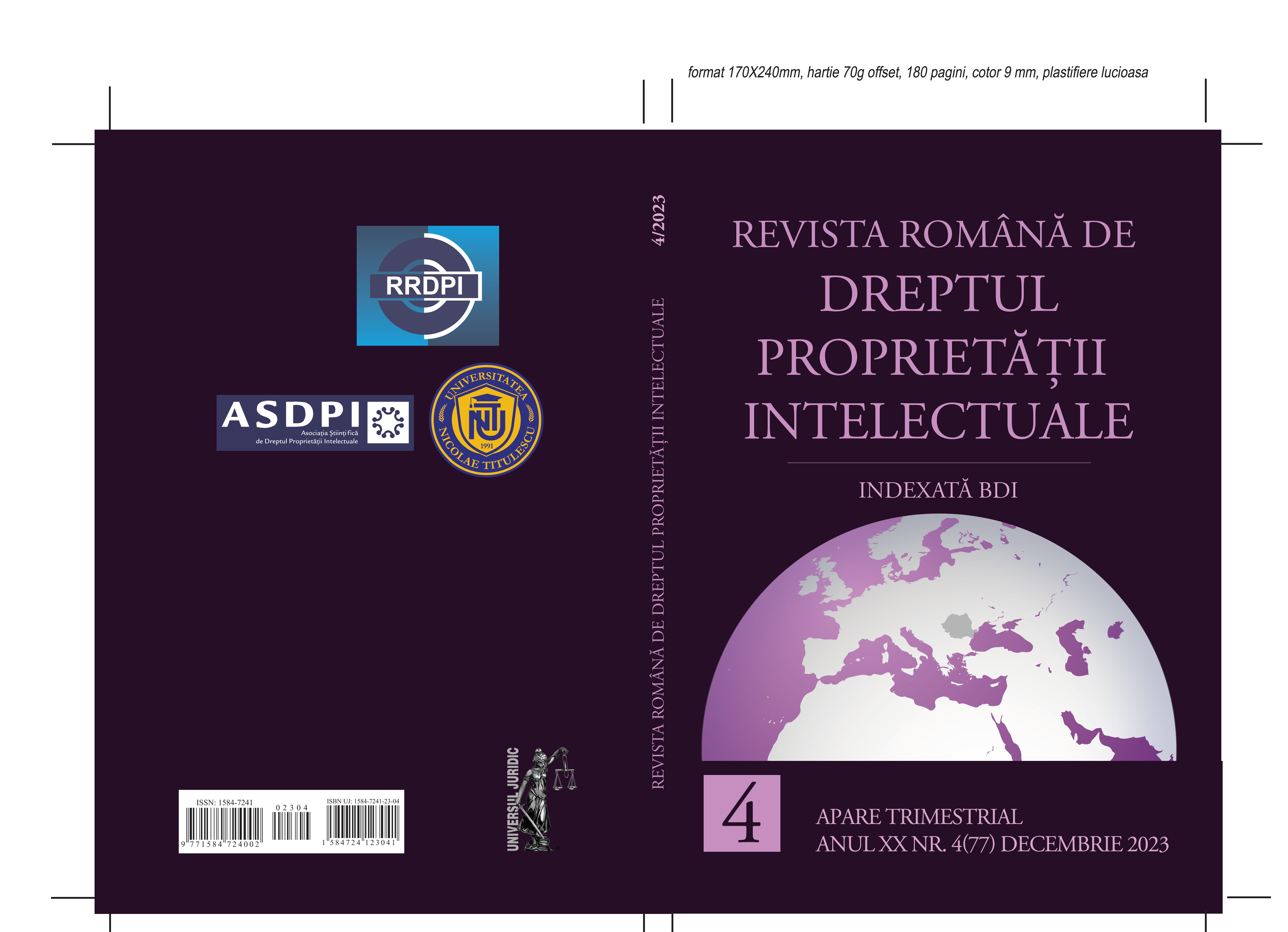Creaţia intelectuală între lucru necorporal, bun incorporal şi drepturile asupra acesteia
Intellectual creation between intangible work, intangible good and the rights over it
Author(s): Alin Speriusi-VladSubject(s): Law, Constitution, Jurisprudence, Civil Law
Published by: Asociaţia Ştiinţifică de Dreptul Proprietăţii Intelectuale
Keywords: intellectual property; intangible property; intangible thing; emergence of the intellectual creation; intellectual creation in the public domain; constitution of the real right;
Summary/Abstract: Intellectual property is the best domain for studying the problematic of intangible assets and intangible things regulated by art. 535 C. civ. In this manner we can determine in which measure the intellectual creations are the intangible assets over that can be constitute patrimonial rights. The premise of art. 535 C. civ. is the existence of intangible assets over that can be constitute, after their emergence, a patrimonial right and in this manner the intangible thing becomes an intangible asset. The intellectual creation likely to be legally protected is, however, protected from its emergence, more precisely by the simple fact of its execution, even if unfinished [according to art. 1 alin. (2) of the Law no. 8/1996], or according to art. 33 alin. (1) point b) of the Law no. 64/1991, from the moment of the application of the product or of the process [this being the initial object of the invention according to art. 6 alin. (1) of the Law no. 64/1991] or from the moment of taking the effective and serious measures for producing and using the product or the process that represents the object of the invention and from the moment of the fulfillment of the substantives conditions of the trade mark according to art. 5 alin. (2) art. 6 alin. (3) point c) and e) and art. 13 alin. (1) of the Law no. 84/1998. Regarding the intellectual creations from the public domain, it is impossible to constitute over them intellectual property patrimonial rights, eventually other rights from another domain. So, the intellectual creations legally protected cannot be the intangible thing referred to in the Civil code. The definition of the intangible asset by the patrimonial right grafted to the intangible thing is not essential for recognizing the possibility of constituting real rights over them (the intangible assets), either in Romania and Quebec, where formally the new civil Code does not refer to things, but to corporal and intangible assets. Also art. 542 does not create an opposition between assets and rights over them (these rights being also assets), this last regulation only assimilates rights over assets in movable and immovable assets, the real rights over immovables assets being assimilated to them, according to alin. (1), and others being movables, according to alin. (2) and in consonance with art. 539 alin. (1), that stipulates what is not movable is immovable. A distinction between the right and its object (thing or asset) is important, considering that only in this manner we can identify the patrimonial right that forms the object of the appropriation of another patrimonial right, the first patrimonial right being related to the object of the legal relation in which content is found the second patrimonial right, this being the only role of art. 535 and of the legal notion of intangible thing. For tangible assets the rule is the appropriation, respectively the constitution and the free transmission of the economic rights over them, excepting the prohibitions established by the law, instead of the intangible assets where the rule is the impossibility of their appropriation, respectively the impossibility of constitution and transmission of them, excepting the case when this appropriation (constitution and transmission of the rights) is allowed by the law. Such appropriation is natural for tangible assets, and, equally, objectively impossible for intangible assets. The intangible assets, generally, and intellectual creations, particularly, are brought in the law hemisphere being object of an appropriation only if the law establish an exclusive right over them. If this is not the case, the intellectual creations move freely and cannot be appropriated by any person. The identification of the assets protected in the intellectual property field is done by fixing the creations of the mind protected. For tangible assets, the idea of (mandatory) authorization for obtaining the property right is dangerous because it accredits the idea that property exists only if allowed by the law, the content (including the existence) of the subjective property right varies according to the good whim of the legislator. The legal norms do not introduce the intellectual creation in the civil circuit, but are recognizing some economic rights for a limited term, the route of the intellectual creation towards the public domain is being suspended during this term. Even more, from the regulation of the prerogatives over the intellectual creation results that we are not before a property right. The legislation regulates thorough each prerogative, which is not specific for a real property right, that are actually implied by the general provisions of art. 555 C. civ.
Journal: Revista Română de Dreptul Proprietăţii Intelectuale
- Issue Year: 2023
- Issue No: 4
- Page Range: 77-111
- Page Count: 35
- Language: Romanian
- Content File-PDF

